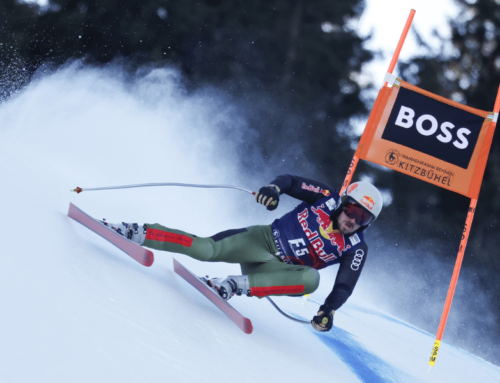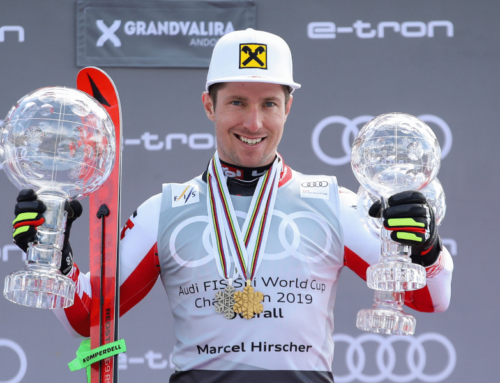Bingaman: How to nail your pre-race dryland routine
What should you do the day before a race? Should you rest completely? Take the day off? Ski a couple runs? Full length training? Hammer out some bike intervals? Lift heavy? Lift light? Figuring out the best way to optimize your physiology for a race day is something worth nailing down as early in your career as possible. All the training in the world can’t do much for you if you’re physically or psychologically flat on race day.
The idea behind training the day before a competition is one related to potentiation. “Potentiation” is the idea of priming something for an even bigger event to come in the near future. The simple act of warming up is something of a potentiator for the training that follows it. Can you train without warming up? You certainly can. But if you want to get the most out of training, a warm-up will set you up for success.
In the same way, a pre-race the day before a race can potentiate increases in strength and power in the following day. The majority of the research on this longer-term potentiation looks at strength or power training the morning of a night event, however the same types of effects can be seen when doing a pre-race in the evening with racing to follow the next morning. When thinking on the effects of potentiation, remember this: strength potentiates strength, power potentiates power. If you want to be powerful for tomorrow’s race, do power work today.
How much do you do though? Where is the crossover between doing enough to potentiate versus doing so much that it simply leads to fatigue? Though the research on this hasn’t gotten so precise as to recommend exact numbers of reps, I do have a few rules of thumb.
First, my pre-race sessions are 45 minutes tops, from the start of the warm-up to the end of the cool-down. Extend longer than that and things tend to drag on and the athletes tend to wear down.
Second — and this is a big one — the athletes need to leave the session feeling primed, excited, and ready, often wanting more. That’s when you know you’ve done a good job. Leaving an athlete feeling primed means low reps, complete rest, max intent, and low total volume. If you start working into a high rep range and/or decreasing the reps, the fatigue will start to build and movements will slow significantly. If power today potentiates power tomorrow, we want to be as powerful as possible, which requires near complete rest
The last thing to consider in regard to rules of thumb might be an obvious one, but is still worth mentioning: You want to potentiate patterns and muscles that will be used in competition. For ski racing, this means my slalom and GS guys do some lightly-weighted quarter squat jumps as well as split jumps. This combination of light resistance and explosive, lower-body-dominant movements are what we’re after. Incredibly isolated movements, like a crunch, won’t do nearly as much for you as a total body movement utilizing your entire chain, like a medicine ball slam.
A pre-race has psychological benefits as well. Moving quickly and smoothly through a powerful movement that you’re comfortable with and confident in allows you to experience feelings of control and self-assurance. With this in mind, it’s good to build pre-races off around movements and patterns that you’re used to. A pre-race is a bad time to introduce new, crazy exercises. In the sport of weightlifting, common practice is to work through power movements (power snatch and power clean) at around 65-75% of 1RM for 3-4 sets of 1-2 reps. Compared to what they’re capable of, this weight is incredibly light. But the feeling of the bar flowing quickly and powerfully with that kind of ease in a pattern that is perfectly grooved can really set athletes up for success mentally.
But enough talk! What does this look like in practice? Let’s say we did a couple training runs the morning before a slalom race. After lunch and an afternoon break, I might hit something like the following with my athletes around mid-afternoon:
5’ of Easy Spinning on a Spin Bike
3 x [5s Hard + 55s Easy]
2’ Easy
Jump Rope x 50 easy reps x 2 sets
Jump Rope x 30 fast reps x 2 sets, 1’ rest in between
2 Rounds:
4 Forward + Backward lunges per leg
8 Total Lateral Lunges in Place
12 Total Torso Rotations
3 Walkout Pushups
2 Rounds:
5 Medball Squat to Press to Slams
5 Medball Side Tosses per Side
1’ Rest Between Rounds
A1) Sandbag Quarter-Squat Jump – 3 sets of 3, light weight (~10% of bodyweight), rest 90s
A2) Lunge Jumps – 3 sets of 4 total, 2’ rest
B1) Lateral Bounding – 2 sets of 6 total, 2’ rest
B2) Diagonal Bounding – 2 sets of 8 total, 2’ rest
C1) Medball side toss (max effort, light ball) – 2 sets of 5 per side, 90s rest
C2) MB Slams – 2 sets of 5, 2’ rest
Quick, powerful, and to-the-point. We’re going for a solid warm-up that progresses and builds upon itself, light loads, max intent, explosive movement, full rest, low total volume, low reps per set. 40 minutes and we’re out.
A final strategy I’ll leave you with is this: For the 2020 season, my athletes and I worked through different style pre-races in the summer 2019. We figured out what each individual athlete liked and didn’t like, what each athlete responded well to, what movements worked best, and more. The plan behind this was for each athlete to head into the season knowing exactly what they would be doing the day before a race, as well as what a backup plan would be should they not be able to complete this pre-race. This certainty early on has massive psychological benefits.
Whether you’re a seasoned veteran or relatively new to the sport, incredibly strong or simply laying the foundation, you can benefit from a proper pre-race. Even if you’ve done a pre-race for years, it’s worth stepping back and evaluating. Try experimenting a bit to figure out if a few tweaks here and there can make your race day preparedness and performance even better.





















